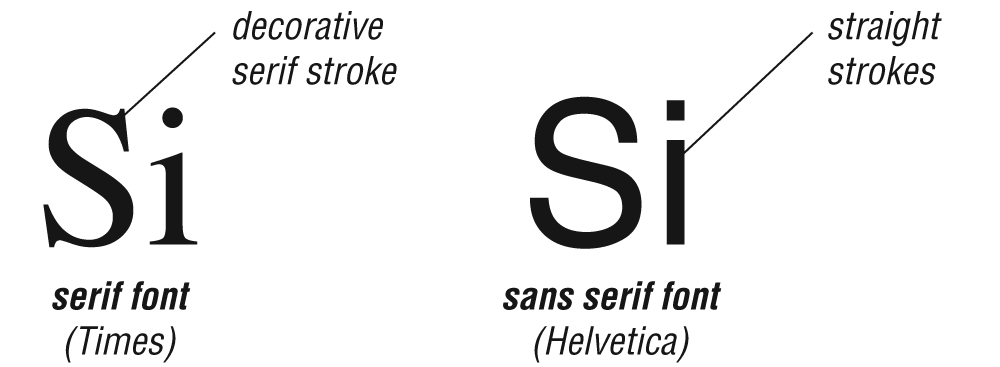Generic Font Families
You should include a generic font family as the last option in your list so that if the specified fonts are not found, a font that matches their general style will be substituted. Generic family names must never be enclosed in quotation marks.
The five possible generic font family values are:
-
serif(e.g., Times New Roman) Serif typefaces have decorative serifs, or slab-like appendages, on the ends of certain letter strokes (Figure 18-1, left).
-
sans-serif(e.g., Helvetica or Arial) San-serif typefaces have straight letter strokes that do not end in serifs (Figure 18-1, right).
-
monospace(e.g., Courier or New Courier) In monospaced typefaces, all characters take up the same amount of horizontal space on a line (Figure 18-2). For example, a capital W will be no wider than a lowercase i. Compare this to normal typefaces that allot different widths to different characters.
-
cursive(e.g., Zapf-Chancery or Comic Sans) Cursive fonts emulate a script or handwritten appearance.
-
fantasy(e.g., Western, Impact, or some display-oriented font) Fantasy fonts are purely decorative and would be appropriate for headlines and other display type. Fantasy is not commonly used for web sites, because it is difficult to anticipate which font will be used and whether it will be legible online.

Figure 18-1. Serif and sans-serif font characters
Figure 18-2. Monospace and normal font characters ...
Get Web Design in a Nutshell, 3rd Edition now with the O’Reilly learning platform.
O’Reilly members experience books, live events, courses curated by job role, and more from O’Reilly and nearly 200 top publishers.

